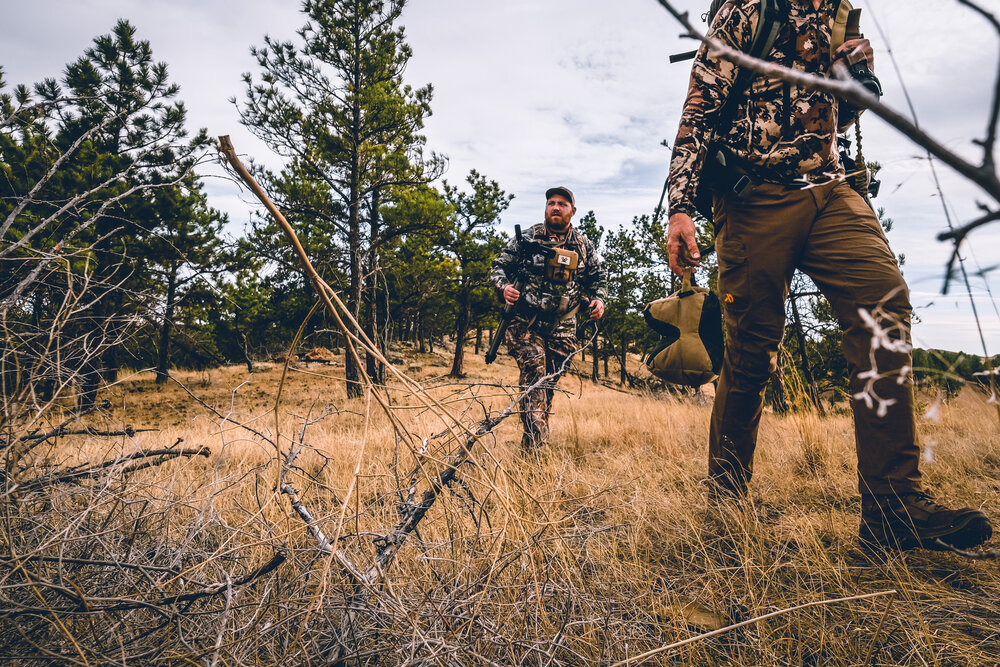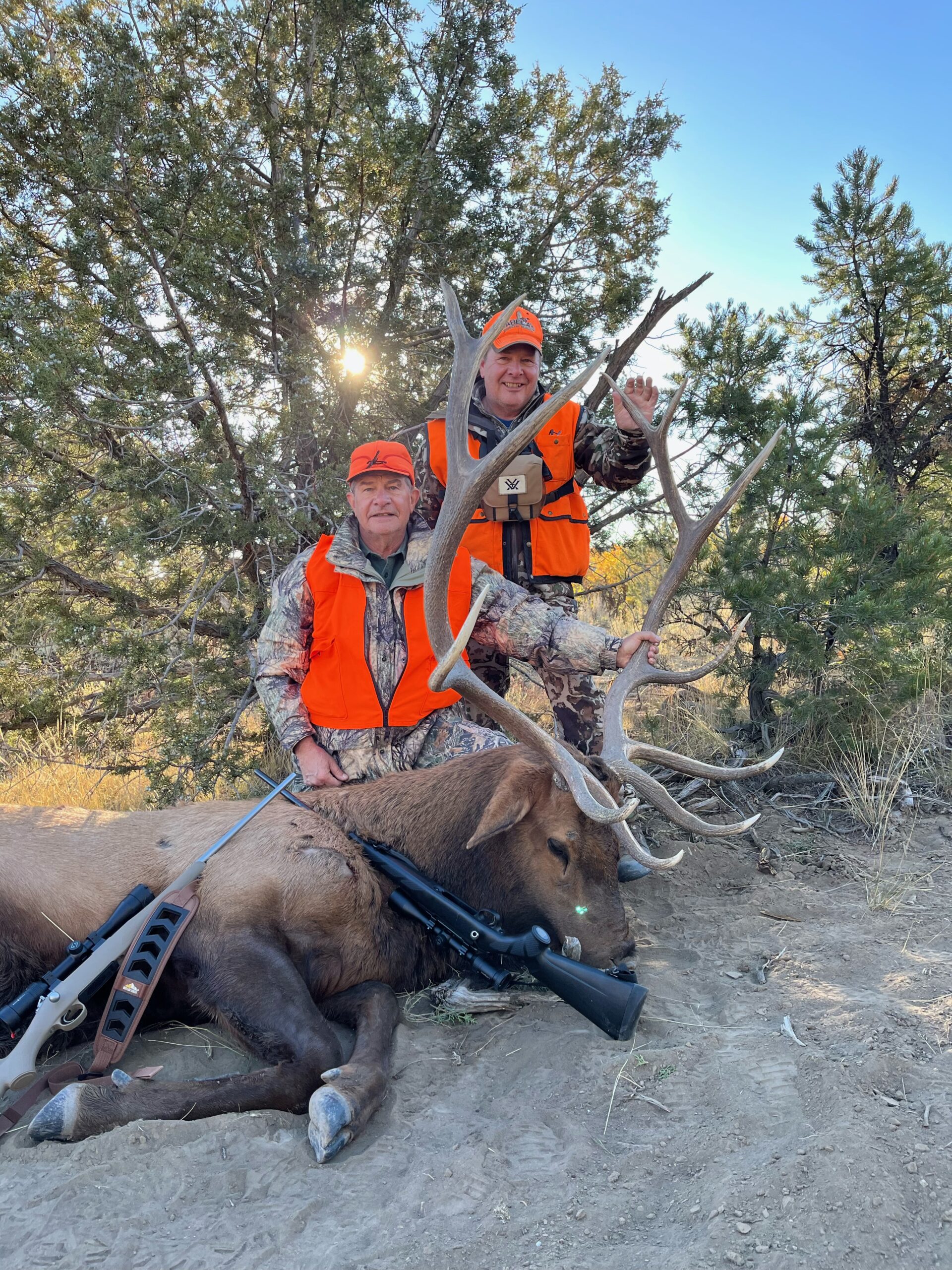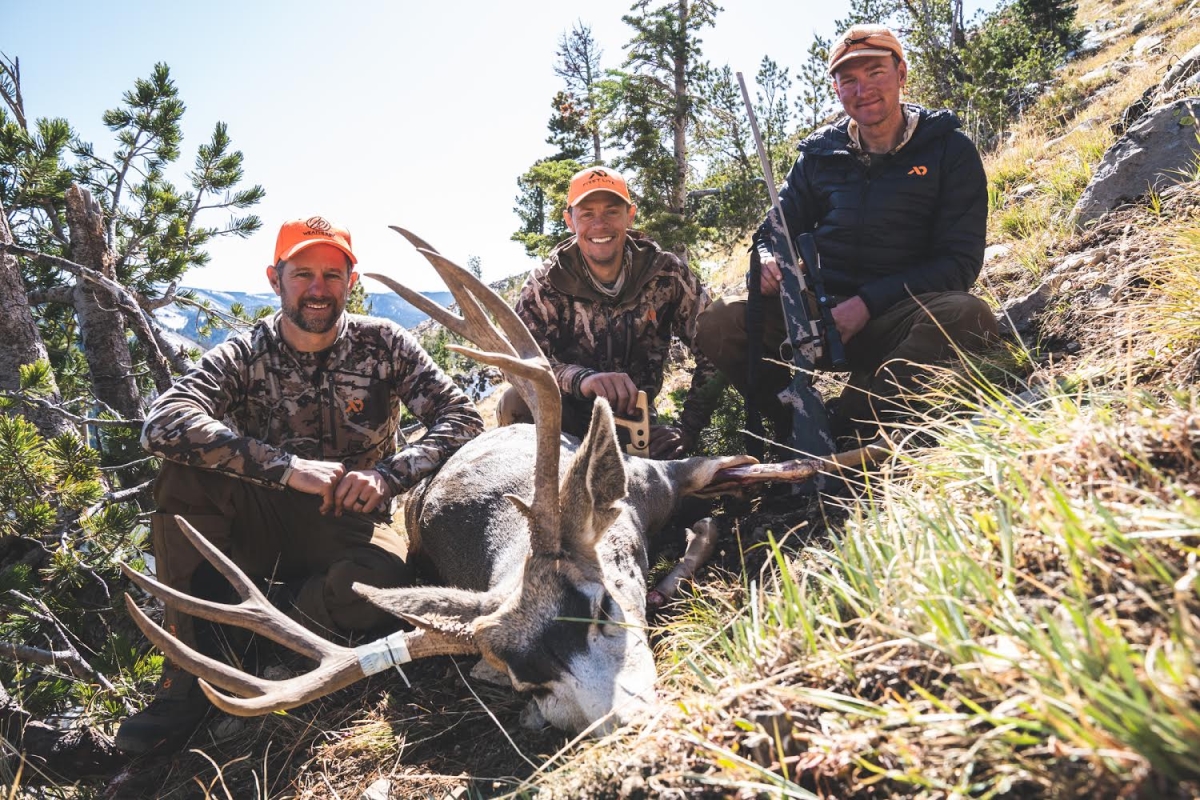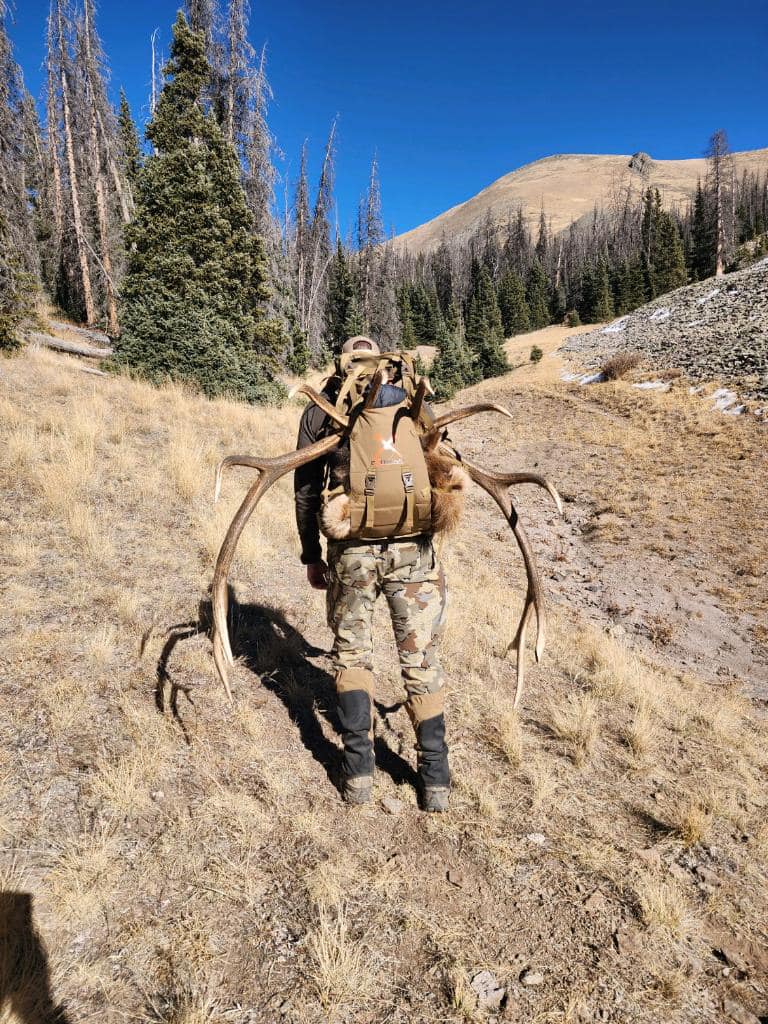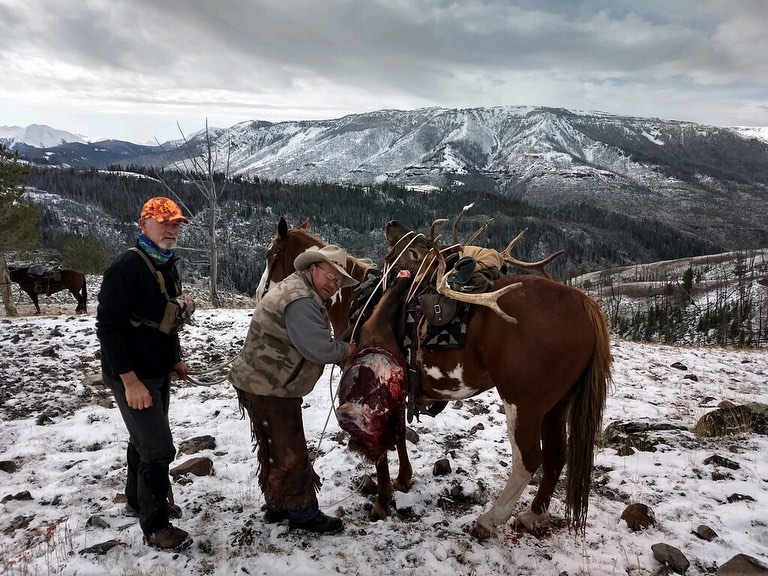Preparing for a Western Hunt: Antelope, Elk, and Mule Deer
The allure of a Western hunt for antelope, elk, or mule deer is undeniable. The vast landscapes, challenging terrain, and the opportunity to pursue these iconic game animals make it a dream hunt for many. However, the success of such a hunt is heavily dependent on preparation. Here’s a guide to getting yourself ready physically, packing the right gear, and selecting the right guide for your adventure.
Photo Credit: Elk, The Ultimate Trophy / Edgemont / South Dakota
Physical Preparation: Getting in Shape for the Hunt
Western hunting, especially for antelope, elk, or mule deer, is not a casual endeavor. The terrain is rugged, and the elevation can be a challenge for those unaccustomed to high altitudes. Physical preparation should begin months before your hunt.
- Cardiovascular Fitness: Start with improving your cardiovascular fitness. This is crucial as you’ll likely be hiking long distances, often uphill, with a pack on your back. Running, cycling, and swimming are excellent ways to build endurance. Incorporate interval training to mimic the short bursts of energy you’ll need when stalking game.
- Strength Training: Focus on building lower body strength. Exercises like squats, lunges, and step-ups are essential as they target the muscles used in hiking. Don’t neglect your core and upper body, as these are important for carrying your gear and stabilizing yourself when taking a shot.
- Altitude Acclimatization: If possible, spend time at higher elevations before your hunt. Even a few weekends in the mountains can help your body adjust to thinner air, reducing the risk of altitude sickness during your hunt.
Download 4-Week Exercise Plan >>
Gear Preparation: What to Pack
Packing the right gear can make or break your hunt. Western hunts require specialized equipment to handle the unique challenges posed by the environment.
- Clothing: Layering is key. Mornings and evenings can be chilly, while afternoons might be warm. Invest in moisture-wicking base layers, insulating mid-layers, and a durable, weather-resistant outer layer. Don’t forget a good hat, gloves, and quality socks to keep your extremities warm and dry.
- Boots: Your boots are arguably the most critical piece of gear. They should be well-broken-in, waterproof, and provide excellent ankle support. Make sure they are suited for the terrain you’ll be hunting in, whether that’s rocky slopes or grassy plains.
- Optics: Good optics are essential for glassing, especially in the wide-open spaces of the West. A high-quality pair of binoculars and a spotting scope will allow you to spot game from a distance without giving away your position.
- Backpack: Your pack should be capable of carrying all your gear comfortably, with room to haul out meat if you’re successful. Look for packs designed specifically for hunting, with features like rifle/bow holders and hydration system compatibility.
- Navigation and Communication: A GPS with preloaded maps, a reliable compass, and a physical map of the area are vital. In remote areas, consider carrying a satellite communicator for emergencies.
Download Gear List >>
Photo Credit: Mule Deer Hunt – Poker Creek Camp / Cokeville / Wyoming
Selecting the Right Guide
If it’s your first time hunting out West, or if you’re targeting a specific trophy animal, hiring a guide can greatly increase your chances of success.
Here’s how to find the right one:
- Research: Start by researching guides who specialize in the species you’re after—whether it’s antelope, elk, or mule deer. Look for guides with a strong track record and positive reviews from previous clients.
- Experience and Knowledge: Ensure your guide has extensive knowledge of the area you’ll be hunting in, as well as the habits and behavior of the game. They should be able to tailor the hunt to your preferences and physical abilities.
- References and Testimonials: Don’t hesitate to ask for references. Speaking with past clients can give you insight into what to expect. Also, read testimonials and reviews online, but take them with a grain of caution, as experiences can vary.
- Cost and Inclusions: Understand what’s included in the guide’s fee. Some guides offer full-service hunts, including lodging, meals, and field dressing, while others might provide a more basic service. Make sure you’re clear on what’s provided and what you need to bring.
Photo Credit: Colorado Archery Elk Hunt / Moffat / Colorado
Most Popular States for Western Hunts
Each of these states offers unique opportunities and challenges for hunters, making them some of the top destinations for Western hunts. Here are a few of the top destinations:
1. Montana
Montana is a premier destination for hunters, offering a vast and diverse landscape that includes everything from rolling prairies to rugged mountains. It’s renowned for its healthy populations of elk, mule deer, whitetail deer, and antelope. Additionally, hunters can pursue bighorn sheep, mountain goats, and moose, though these tags are harder to obtain. Montana’s combination of public lands and hunting opportunities make it a top choice for both resident and non-resident hunters.
Resources: Hunters can visit the Montana Fish, Wildlife & Parks website to learn more about hunting regulations, apply for licenses, and check season dates.
2. Colorado
Colorado is famous for its high-altitude elk hunting, boasting the largest elk population in the United States. The state also offers opportunities to hunt mule deer, pronghorn, black bear, and mountain lion. The vast expanses of public land and the Rocky Mountains provide ample opportunity for a challenging and rewarding hunt. Colorado’s over-the-counter elk tags for certain seasons make it accessible for many hunters.
Resources: Visit the Colorado Parks and Wildlife website for detailed information on hunting regulations, license applications, and hunt planning resources.
3. Wyoming
Wyoming is a hunter’s paradise, known for its incredible populations of pronghorn antelope, elk, and mule deer. The state also offers opportunities for bison, moose, and bighorn sheep hunts. Wyoming’s expansive public lands and well-managed wildlife populations make it a top destination for hunters seeking a classic Western hunt experience. Pronghorn antelope are particularly abundant in Wyoming, often providing one of the best opportunities in the country to harvest this species.
Resources: The Wyoming Game and Fish Department website offers comprehensive information on hunting licenses, regulations, and seasonal dates.
4. Idaho
Idaho offers diverse hunting opportunities in its varied landscapes, from dense forests to high desert. The state is home to abundant populations of elk, mule deer, and whitetail deer. Hunters can also pursue mountain lions, black bears, and wolves. Idaho’s extensive wilderness areas provide a rugged backdrop for hunting, and its relatively affordable tags and non-resident opportunities make it accessible to many.
Resources: Hunters can explore the Idaho Fish and Game website for information on hunting seasons, regulations, and license requirements.
5. New Mexico
New Mexico is well-known for its trophy elk hunting, particularly for its unique opportunity to hunt in the Gila National Forest. The state also offers hunts for mule deer, pronghorn antelope, black bear, and oryx (in limited areas). The diverse terrain, ranging from deserts to mountain ranges, provides unique challenges and experiences for hunters. New Mexico’s elk tags are highly sought after, often requiring entry into a lottery system for non-residents.
Resources: Visit the New Mexico Department of Game & Fish website for details on hunting regulations, draw odds, and license applications.
6. Arizona
Arizona is famed for its trophy mule deer and elk, particularly in the state’s northern regions. The state also offers hunting opportunities for pronghorn antelope, Coues deer, javelina, and black bear. Arizona’s terrain ranges from desert to mountainous, offering a variety of hunting experiences. The state’s strict management and draw systems ensure quality hunts, though non-residents often face tougher odds in the lottery.
Resources: Hunters should check out the Arizona Game and Fish Department website for comprehensive hunting information, including regulations, season dates, and application processes.
7. Utah
Utah is another top destination for Western big game hunters, offering excellent opportunities to hunt elk, mule deer, and pronghorn. The state is also known for its trophy-quality animals, especially elk. Utah’s varied terrain, including high mountains and expansive plateaus, provides a diverse hunting environment. The state’s limited-entry hunts are highly competitive, with some of the most sought-after tags in the West.
Resources: The Utah Division of Wildlife Resources website is a key resource for hunters, providing information on license applications, draw odds, and hunting regulations.
Photo Credit: Butte Creek Archery Elk Hunt / Cody / Wyoming
Preparing for a Western hunt for antelope, elk, or mule deer is a significant undertaking, but the rewards are worth the effort. By focusing on your physical fitness, packing the right gear, and choosing a knowledgeable guide, you’ll be well on your way to a successful and unforgettable hunting experience. Remember, the more prepared you are, the more you can enjoy the beauty and challenge of the hunt.

